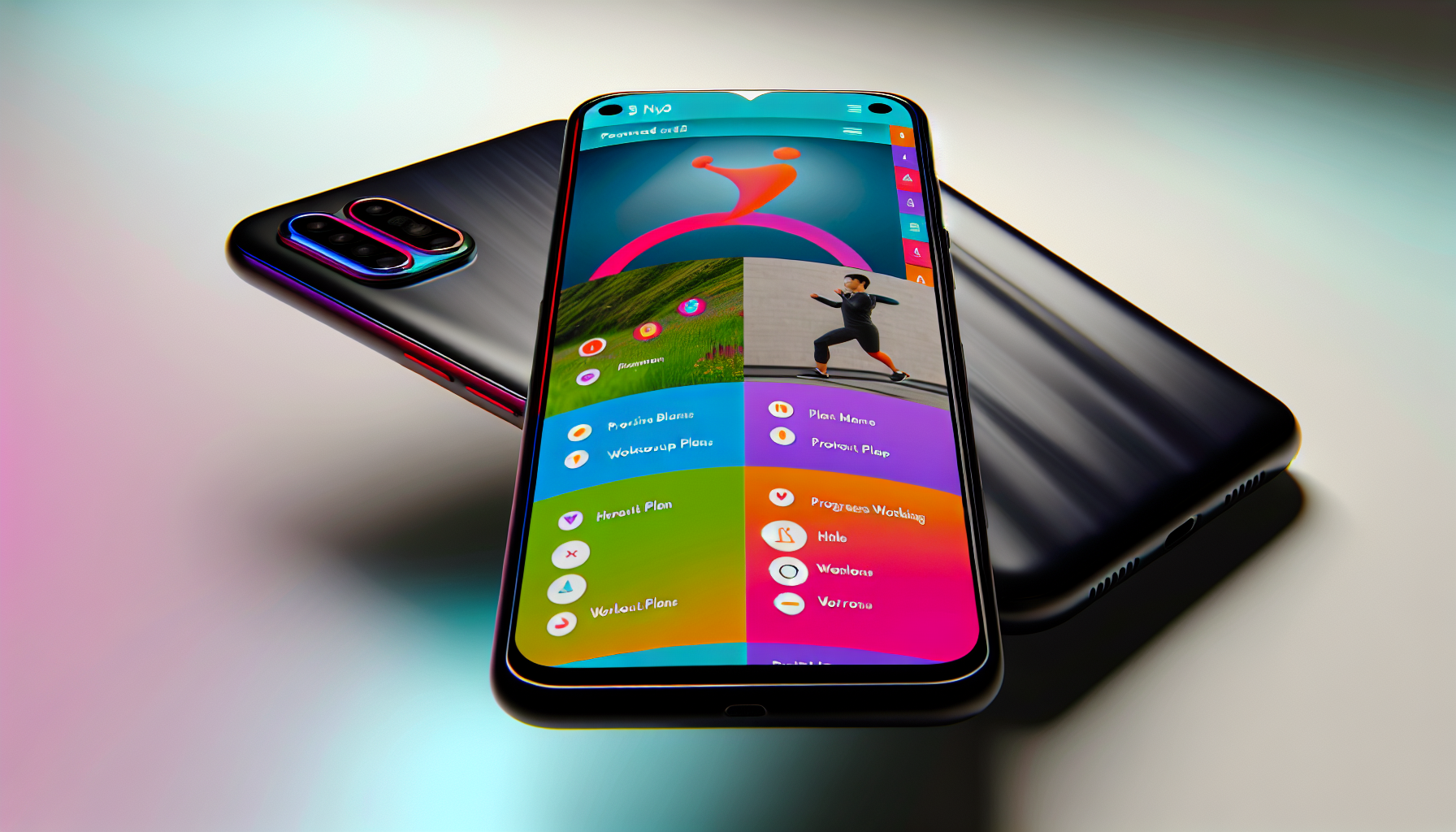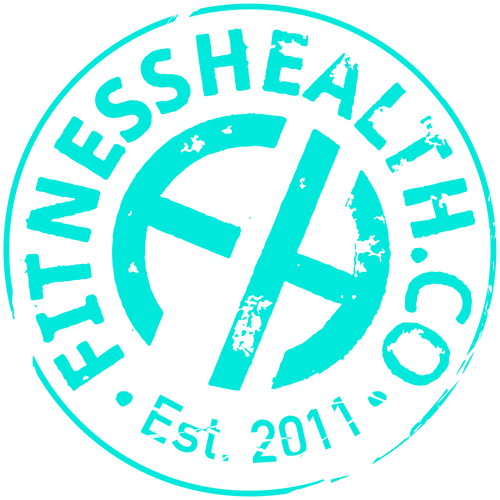Optimizing Your Workout: The Rise of Personalized Fitness and Technology Integration in 2023
By 2023, technology and fitness are united to give us a better way of exercising that is both interactive and effective. We now have access to workout plans tailored specifically for our objectives, lifestyle needs, as well as health metrics. All while being able to track data in real-time with personalized insights along the way.
Key Takeaways
-
Technology has enabled a personalized fitness experience with wearables, mobile apps and smart gym equipment.
-
Customizing workouts & tracking progress is key to achieving personal goals, facilitated by various tools such as journals & trackers.
-
The future of personalized fitness looks promising with virtual reality, wearable tech and healthcare system integration set to revolutionize the industry.
The Role of Technology in Personalized Fitness

With the advancement of technology, personalized fitness has been improved and adapted for various lifestyles. Wearable devices used to be limited only to step counting, but now they monitor heart rate continuously, offering options tailored towards different users with distinct aims in mind. This year alone, a vast selection of trackers have become available ranging from standard ones that measure health metrics like your blood oxygen saturation levels and remind you when it’s time wash your hands to more sophisticated models ideal for specific goals individuals might set themselves.
Mobile applications such as FitOn or Nike Training Club offer a range of activities which can then be monitored meaning every individual’s requirements are provided individually. Smart gym equipment too joins this tech revolution improving exercise experience by incorporating streaming lessons featuring informed instructors into their systems alongside workout videos and libraries allowing customers access any type of activity they prefer plus live competitions providing an engaging community vibe throughout the journey to achieve these said objectives.
Wearable Devices

Wearable devices have experienced tremendous growth over time, making them more useful than ever. They now offer a variety of features other trackers cannot and can link with different applications and gadgets. Some of the physical activities they track are steps taken, heart rate, calories burned, distance traveled, sleep quality and stress levels.
The best fitness trackers available in 2023 boast even greater capabilities such as personalized exercise programs for individual goals along with monitoring tools for both sleep cycles and stress level indicators. Plus built-in GPS to accurately keep up records during outside sessions. Apple Watch SE stands out among its peers due to wheelchair tracking being one specific feature it offers while Fitbit Inspire 3 is favoured primarily because of its straightforwardness when it comes to measurements keeping itself precise all through together concomitantly having long battery life so there’s no need to worry about charging pixel watch too often. Aside from these two giants, Samsung Galaxy Watch 5 and Samsung Galaxy Watch 5. Pro has also earned fame thanks mainly to their sturdy structure which ensures uninterrupted utilization regardless if outdoors or indoors workouts alike. For those looking forward to investing into wearable tech, this could prove worthwhile investment considering how reliable this device actually proves over time by giving accurate recordings pertaining health related stats like rest timings & daily activity cycle.
All things considered Wearable Devices provide an effective solution that allow people identify any type metrics relevant battery life especially regarding sports -this may range from something fairly elementary like step counting or automatic monitor vital signs etc offering great aid reaching personalized plans securing your desired milestones whether you’re trying shape body according expectations desires engaging serious marathon runner needing close eye on every aspect crucial performance enabling overcome challenges barriers setting own course work upon inclusive fashion accompanied flexible timing arrangements yield meaningful results come out triumphant journey striving inevitably reach peak capacity today Tomorrow’s era technological advancements continuously move upward trajectory surely bring exciting times realm wearables perspective prioritizing convenience user experience above everything else
Mobile Apps

Fitness has been revolutionized by mobile applications, offering tailored workout plans that are trackable and provide access to a vast library of exercises. For instance, Google Maps and Map My Fitness enable users to monitor activities of all kinds with customized options for their goals or level of fitness. There is an impressive selection ranging from free apps such as Nike Training Club featuring personalized routines, goal setting/monitoring tools, social components and more. To convenient (but less equipped) budget-friendly versions like FitOn. Right up to the premium Apple Fitness+ providing exclusive fitness features at an additional cost on the App Store. Allowing different user requirements - finance wise too - personalised fitness can now be accessible no matter who you are!
Smart Gym Equipment
Gym equipment is no longer limited to weights and treadmills. Now, advanced connected machines like smart bikes and interactive treadmills offer an immersive workout experience with real-time fitness tracking, personalized workouts, classes from professionals online as well as analyzing performance data for a more effective exercise regimen. Peloton, Technogym, Mirror, Tonal Hydrow Tempo Studio NordicTrack or Johnson Health. Tech are few of the leaders in providing topnotch health tech gadgets which can monitor one’s progress via different technologies and sensors while adjusting treadmill speeds based on specific activities automatically all under offering invaluable feedback to optimize results. If needed. These modern gym tools represent a new step forward regarding enhanced personal training journey by giving people access to better tailored recommendations depending on their metrics such as weight lifted during exercising sessions plus notifying them every time they need correction about forms through supplied remarks that really matter when it comes down increasing overall outcomes related to those goals set up prior to the beginning program./p>
Custom Workouts and Tracking Progress
Personalized fitness incorporates more than just the use of technology. It also encompasses tailoring physical activity to an individual’s particular objectives and tracking progress over time. The creation of a tailored exercise program involves establishing specific health goals, assessing existing conditioning levels, selecting exercises that are appropriate for their abilities and ambition, deciding on workout intensity as well as duration plus taking into account nutrition within the plan.
Popular mobile applications such as GymBook, Nike Training Club or Strong assist with developing personalized workouts while monitoring results obtained along the way. Something essential in order to reach desired outcomes since it increases commitment and responsibility felt by users toward themselves, gives clear instructions for goal setting purposes ultimately building up self-confidence.
Creating Custom Workouts
In order to create an individualized workout routine, it is important to identify attainable and time-constrained fitness objectives. The next step would be selecting the right exercises for your goals while accounting for all components of physical fitness when determining training volume. Then organizing sessions accordingly so that challenges can increase in intensity as strength and endurance rise gradually over a period of time. Also, modifications should take place based on one’s unique level of athleticism. This may involve increasing weights or resistance bands during strength conditioning or using the 10% rule - which suggests making no more than 10% alterations with respect to frequency, quantity or degree, when performing cardio workouts.
Monitoring Progress
Tracking one’s progress in an exercise regime is essential to staying motivated and reaching fitness targets. To do this, it helps to keep a record of workouts in a journal or through the use of apps and trackers that can provide helpful information on body measurements, composition changes, as well as pictures showing how far you have come. Other ways are measuring grip strength, gauging countermovement jump height or making use of the RPE (Rating Of Perceived Exertion) scale for Assessment.
Measuring heart rate during workouts also provides data about intensity and effort applied while training, which will be useful when setting target zones specific for individual goals relating to cardiovascular health optimization. For those with wearable devices outfitted with accelerometers/altimeters like wristbands, distance covered with heart rate monitoring offers even more precise insight into each person’s progression over time towards their desired outcome.
The Power of Data in Personalized Fitness

Data has become a key ingredient in personalized fitness. By utilizing data analysis and AI, individuals can make wiser decisions regarding their physical activities as well as general wellbeing. Data analytics provides ample amounts of relevant knowledge and information to help them monitor progress, reach set goals faster, and boost overall performance levels. All this is made possible by collecting pieces of evidence from multiple sources including nutrition apps along with fitness trackers that are then studied using machine learning algorithms for the purpose of crafting individualized exercise routines based on personal objectives or preferences.
Data Analytics
In the realm of personalized fitness, data analytics has been crucial in achieving success. Through tracking user health metrics, lifestyle patterns and personal preferences, as well as workout sessions and revenue data, these tools provide developers insights into how their app is used by users with greater accuracy than ever before. This then leads to improved progress towards stated goals for both individuals who work out alone or those using group based programs such as FitSW, FitBudds Trainerize, TeamUp Fitness Analytics or Easalytics, which makes collecting this information easier. Allowing workouts to be tailored more effectively resulting in tangible improvements overall levels of fitness through quantitative analysis providing a clear path ahead outlined within numerical data points collected from day-to-day activities.
AI and Machine Learning
Personalized fitness is undergoing a transformation with the help of AI and machine learning. Analyzing extensive sets of data, such as workouts and user info, these technologies can design individual exercise plans to fulfill people’s requirements, goals, or wants. Machine-learning algorithms even optimize set numbers and weights for each routine in order to maximize results from the workout session.
AI also plays an important role when it comes to establishing achievable fitness objectives - thanks to predictive analysis using historical performance figures. Users are assisted by this technology towards targets that they’re able to achieve efficiently while utilizing their time productively.
Social Connectivity and Motivation
Physical activity and exercise play an important role in encouraging personalized fitness. One way to promote social connectivity and motivation is by sharing physical activities on online networks, which not only boosts individual connectedness but also increases engagement in physical exercises. Group workouts can be a great source of inspiration for people who want to stay fit too. The power of influential figures from the world of health and fitness that exist through platforms such as Instagram or YouTube helps motivate individuals striving toward their goals even more significantly than ever before due to accessability.
Social media’s involvement with this area has been particularly instrumental when it comes to providing a place where influencers share tips about different routines plus how progress goes along. This level of transparency combined with accountability offers users useful instruments so they keep engaged during their journey into greater wellness.
Community Features
Fitness apps are increasingly integrating community-oriented features to create an optimal user experience. Leaderboards, for example, allow users to compare their progress with others and inspire them to strive. In order to excel above the rest. Incorporating social media into these programs can promote motivation by building a communal atmosphere that supports one another as well as allowing individuals to display how far they’ve come through progression updates or fun challenges. Finally, such engagement helps bolster adherence due not only to providing accountability but creating a sense of belonging which makes exercising much more enjoyable!
Virtual Coaching
Achieving fitness goals can be easily done with virtual coaching, which provides a personalized approach that goes beyond basic workout programs. Sessions are led by professional coaches via video chats for real-time interaction and cost less than in-person options while still providing tailored guidance. This method has several advantages such as improved effectiveness of training compared to going solo, accountability and motivation factors when exercising, removing guesswork from routines thanks to the coach’s expertise as well as more convenient hours fitting all schedules better, so working out regularly is easier now! Popular platforms like ABC Trainerize or iFIT provide this kind of service allowing you guided support on your way towards achieving whatever health goal you might have set yourself.
Health and Wellness Beyond Exercise
Wearable devices such basic fitness tracker such as Apple Watch and Fitbit Charge 5 can measure sleep stages, total sleeping time along with heart rate and respiration. This gives people a better understanding of their sleep quality, which is an important factor to consider when it comes to overall wellness. Monitoring Heart Rate Variability (HRV) helps individuals determine how resilient they are in terms of managing stress outside exercise - allowing them greater access for enhancing their health beyond physical activity alone.
Stress Management
Stress management plays an essential role in maintaining overall health and wellbeing. To help reduce stress, some successful tools include: WorryTree, mindfulness applications, wearable devices that monitor heart rate and breathing patterns, and virtual reality programs developed to soothe employee anxiety levels. As well as AI-driven solutions aimed at improving staff mental wellness.
These methods are proven effective for managing stressors efficiently. Additionally, technologies like guided meditations can assist in releasing tension with visual or audio cues guiding the user towards a restful state while alleviating feelings of fear and worry. In addition, breath control exercises utilize specific instructions such as inhaling 4 counts then exhaling 8 which work together to achieve relaxation speedily by regulating respiration periods effectively. Wearable gadgets designed specifically for tracking pulse rates could also aid users in achieving reduced amounts of anxiety since they offer insight into the body’s physical reactions under times of strain.
Sleep Tracking

Sleep tracking is a key element of wellbeing. Apps and tools that assess sleep duration, quality, stages and disturbance help one achieve better rest periods. Such gadgets usually use accelerometers to observe body movements while in sleep as well as continuous heart rate monitoring and monitors for more detailed data collection. The analysis provided by the technology involves machine learning algorithms sifting through compiled metrics such as total time asleep. How often you wake up during resting hours or your bedtime consistency to come up with summaries about individual patterns plus tips on enhancing overall sleep experience.
The Future of Personalized Fitness and Technology
The future of personalized fitness and technology is looking bright, with virtual reality, wearable tech developments, and integrations into healthcare systems all on the horizon. Virtual reality has already had a tremendous impact in improving user engagement for personalized workouts by providing immersive experiences that encourage consistency.
Wearable tech too has advanced from its basic roots to becoming powerful tools which give real-time data analytics as well as personalised exercise plans coupled with health coaching features. Looking ahead, we can expect improved applications utilizing AI algorithms running on best fitness tracker, apps linked up to the healthcare system offering tailored workout recommendations based upon physical condition or health records, platforms allowing individuals to join classes together while monitoring their progress online, plus there are also possibilities of enhanced diagnostics through wearable devices designed specifically for patient surveillance purposes.
Virtual Reality
Virtual reality offers a new dimension to customised fitness, which includes augmented reality personal trainers who can provide guidance, assistance and calorie counts. Through advanced algorithms developed by the VR platforms, users’ physical levels, goals and interests are taken into account when creating tailor-made workouts for them that are both engaging and enjoyable.
FitXR, Supernatural Beat Saber Thrill of the Fight Holoball & Holopoint - just some examples of virtual exercise solutions – can help you reap plenty of benefits such as burning calories faster while lessening your mental tension, increasing heart rate during activity, reducing cravings between meals or even pain endured throughout exercising regimes. Plus there’s improved balance/coordination skill development along with better memory recall all helping elevate quality in life whilst decreasing fatigue also fighting stress & depression too!
Wearable Tech Innovations
The potential of wearable fitness technology continues to be a source of fascination, with possibilities such as 3D body measurement systems, AR and VR headsets, intelligent apparel and accessories, electrical muscle stimulation tools and gesture control features. Enhanced sensors in these wearables can collect data more efficiently regarding physical activity like steps taken per day or heart rate while also monitoring sleep patterns, energy expenditure levels and amount of training done.
These improvements have been substantial when it comes to the precision received from gathering health-related information. For instance, they provide real-time analytics into how active you are plus AI capabilities which enable enhanced analysis accuracy across all metrics being tracked. To maintain even better reliability over time advancements need to focus on transparency within the collection & assessment process too, an area where developments show continued promise already!
Integration with Healthcare
Integrating fitness data with healthcare systems has the potential to revolutionize health care. It could provide medical practitioners with a comprehensive view of an individual’s well-being, personal interventions and continuous health tracking, for improved management. A broad range of devices are already being implemented such as Apple Watch, Samsung Galaxy Gear Sport and Fitbit along with activity trackers, smart watches ECG monitors blood pressure gauges and pregnancy monitoring tools. Predictions indicate that this fusion is set to grow rapidly in the future – making it all the more relevant today.
Summary
Now is an ideal time to embrace personalized fitness and technology due to recent advances like virtual reality, smart gym equipment and enhanced data analytics. Wearable devices are revolutionizing the field of fitness with smart features, including AI-powered mobile applications that provide users with increased social connectivity for a more engaging experience. Moving forward, this ever-evolving technological landscape shows potential for Integration into healthcare systems in the future as well.
Frequently Asked Questions
What is the role of technology in physical fitness?
Technology is of great importance when it comes to physical fitness as it can help individuals stay motivated, track progress and health, while also providing behavior change methods like goal setting, reinforcement, incentives, as well as social support. All this aids in building a stronger commitment towards attaining those sought after fitness objectives through regular exercise.
What does it mean to personalize physical fitness?
Personalized fitness objectives can help with improved physical strength, flexibility and endurance while also targeting injury rehabilitation, nutrition plans and other individual requirements.
How has technology affected personal trainers?
The technological advances of recent years have made it possible for personal trainers to now create custom workouts with specialized plans and give targeted feedback for each person they are working with. They can keep an eye on progress during workouts, as well as share exercise agendas using AI generated sessions. Virtual one-to-one training affords people the opportunity to access a trainer regardless of their location - providing more widely available support when required.
How is fitness data integrated with healthcare systems?
Healthcare providers are able to use AI-powered apps, online platforms and wearable devices to obtain an individual’s comprehensive health data which enables them to formulate personalized treatment plans.







